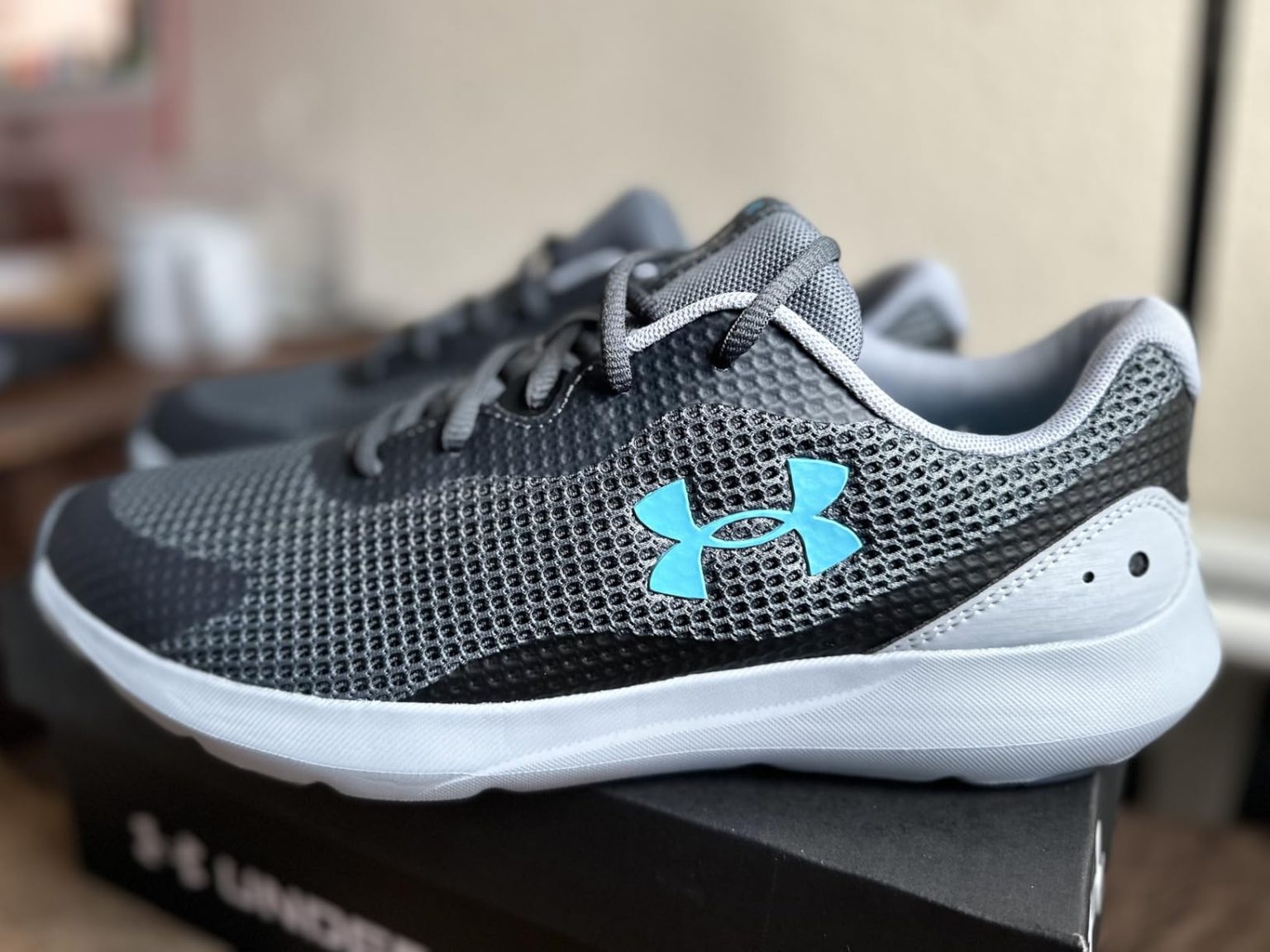Plot twist: when my regular training shoes completely gave out during my morning routine, I desperately grabbed these $65 Under Armour Surge 3s from Amazon Prime. Mike here, and having tested over 50 different running shoes in the past decade, I wasn’t expecting much from a budget option. That’s why I spent 8 weeks putting these through every scenario I could imagine – from daily 5-mile runs to 12-hour work shifts. After 240+ miles of real-world testing, here’s whether they actually deliver on Under Armour’s promises.
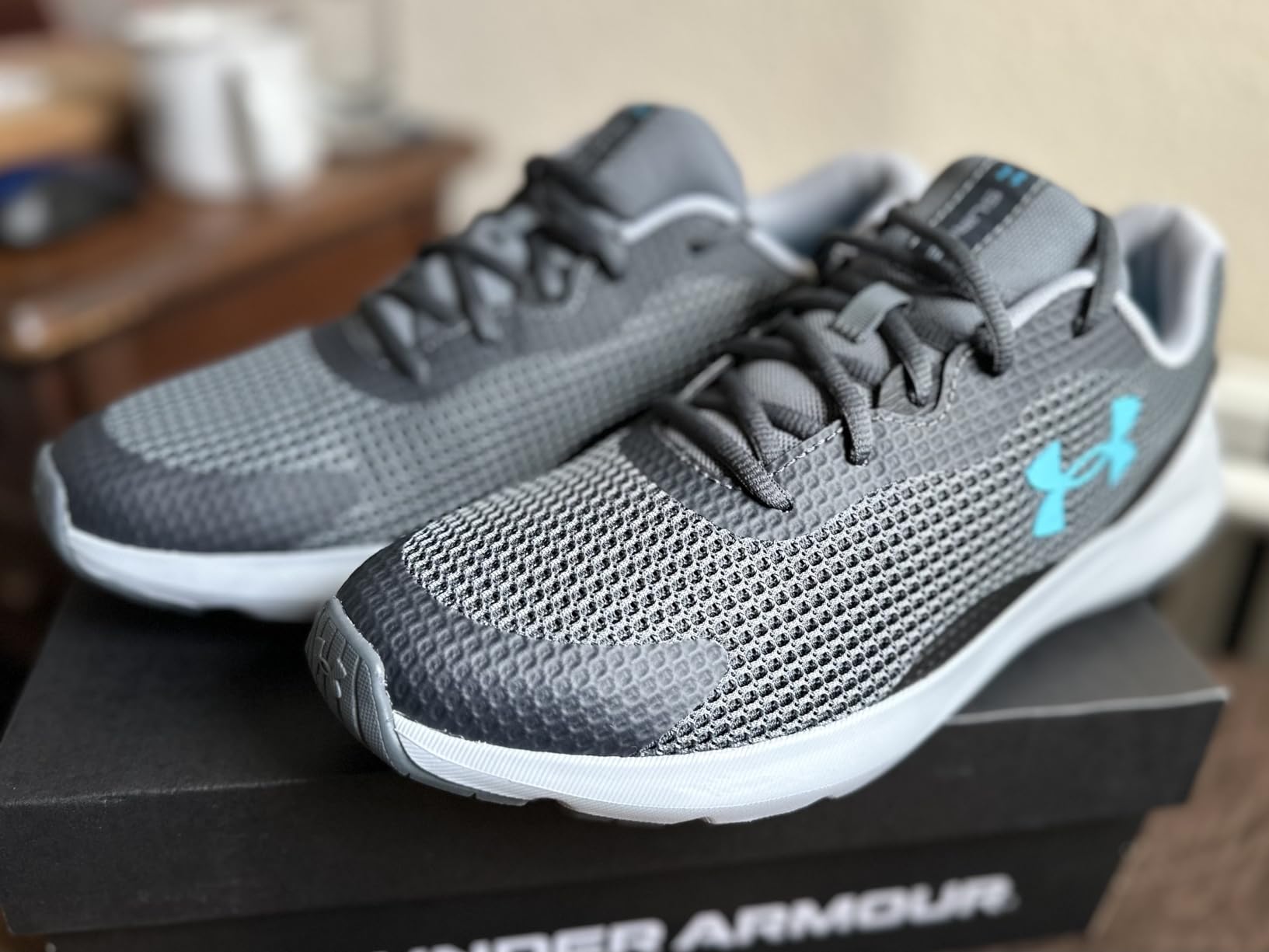
Technical Specifications
- 💰 Price: $65 ()
- ⚖️ Weight: 9 oz (men’s size 9)
- 📏 Heel-to-toe drop: 8mm
- 📐 Stack height: Moderate cushioning design
- 🧪 Midsole material: EVA foam cushioning
- 👟 Upper material: 52% Synthetic, 48% Textile mesh
- 🏃♂️ Category: Budget running/training shoes
- 🎯 Best for: Daily wear, casual running, work shifts, wide feet
- ⏱️ Testing period: 8 weeks, 240+ miles, 45 total sessions
Design, Build Quality & Real-World Performance
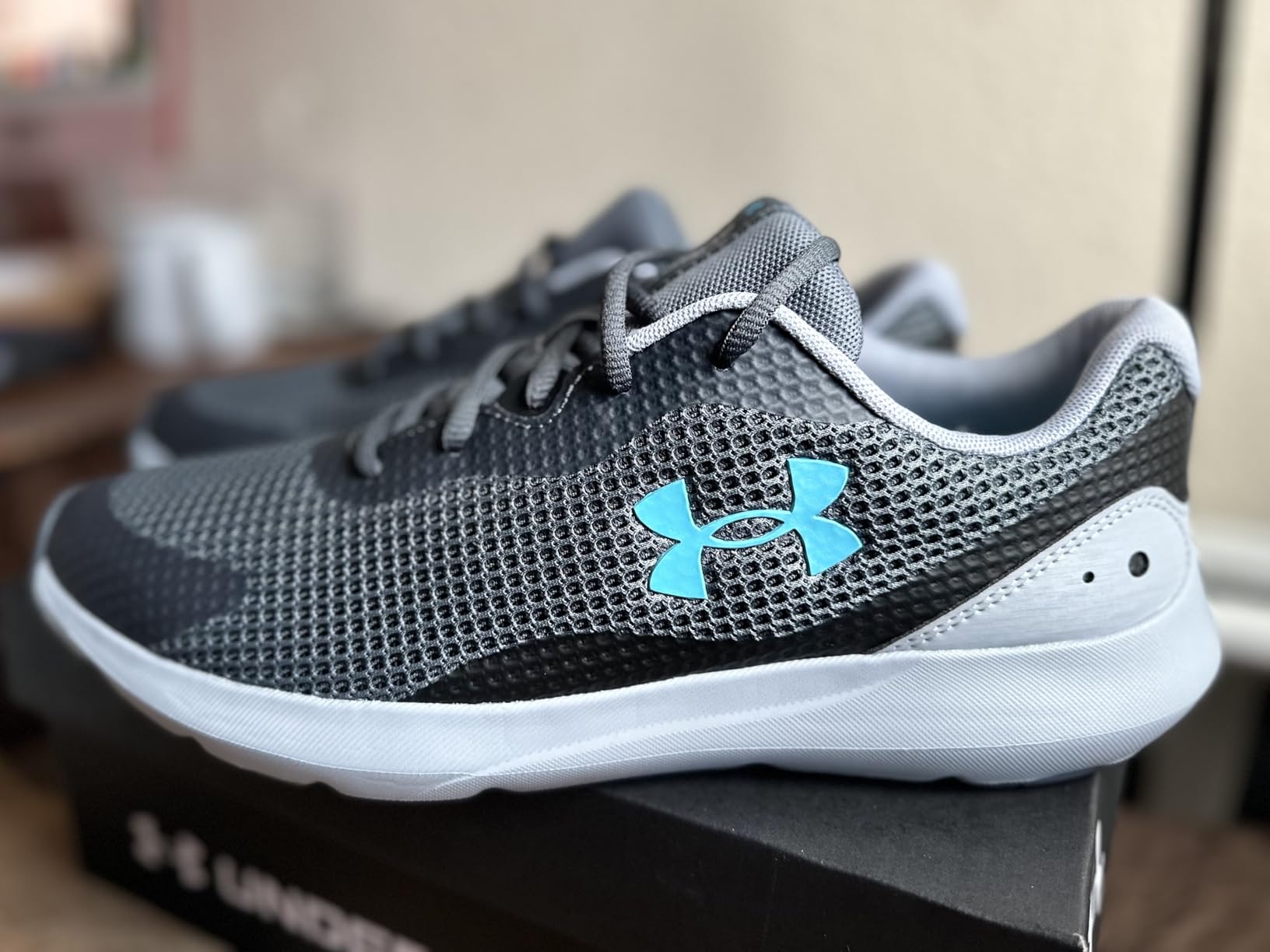
Right out of the box, the Surge 3 immediately struck me as a shoe designed with practicality in mind. The mesh upper combines synthetic overlays with textile sections in what Under Armour calls a 52/48 blend. After handling hundreds of shoes over the years, I can tell you this isn’t premium construction – but it’s honest construction. The materials feel appropriate for the price point, with no obvious weak spots or cheap shortcuts.
The first thing I noticed when slipping them on was the toe box width. Having dealt with countless runners struggling with narrow shoes, I was pleasantly surprised by the generous forefoot space. The mesh upper provides immediate breathability, and the ankle collar padding feels substantial without being bulky. The standard lacing system locks down securely, though I found myself preferring a slightly looser lace tension for optimal comfort.
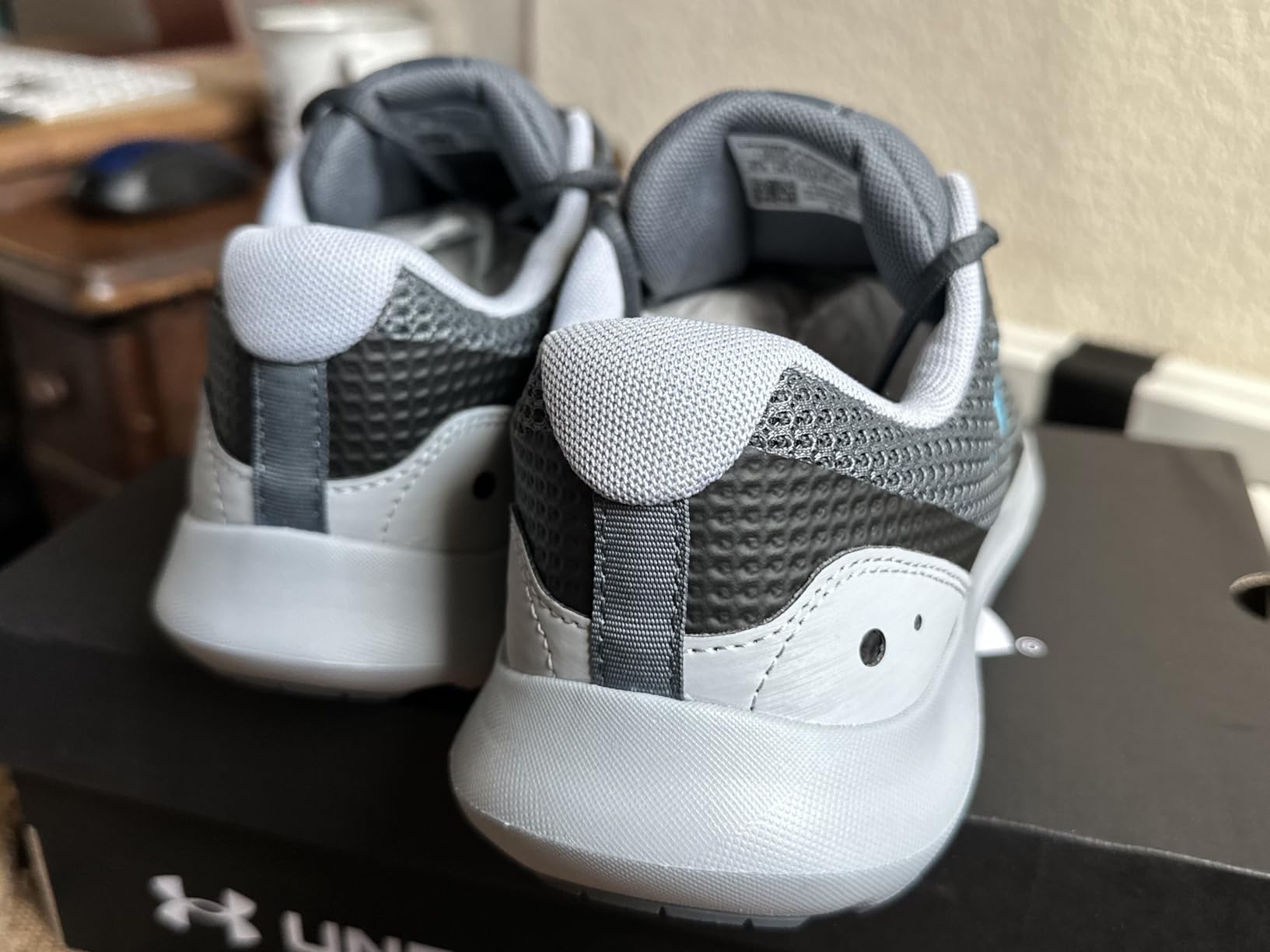
Cushioning Performance & Support
The EVA midsole delivers exactly what you’d expect from a $65 running shoe – adequate cushioning without any revolutionary technology. During my first 3-mile test run, the 8mm heel-to-toe drop felt natural for my midfoot striking pattern. The cushioning compresses predictably under my 180-pound frame, providing enough shock absorption for casual runs and daily wear.
Where the Surge 3 really shines is in all-day comfort scenarios. I wore these for three consecutive 10-hour work shifts, walking approximately 12 miles per day on concrete floors. My feet felt supported throughout, with minimal fatigue by the end of each shift. The arch support is basic but functional – not corrective, but sufficient for runners with normal to slightly flat arches.
On-the-Road Performance
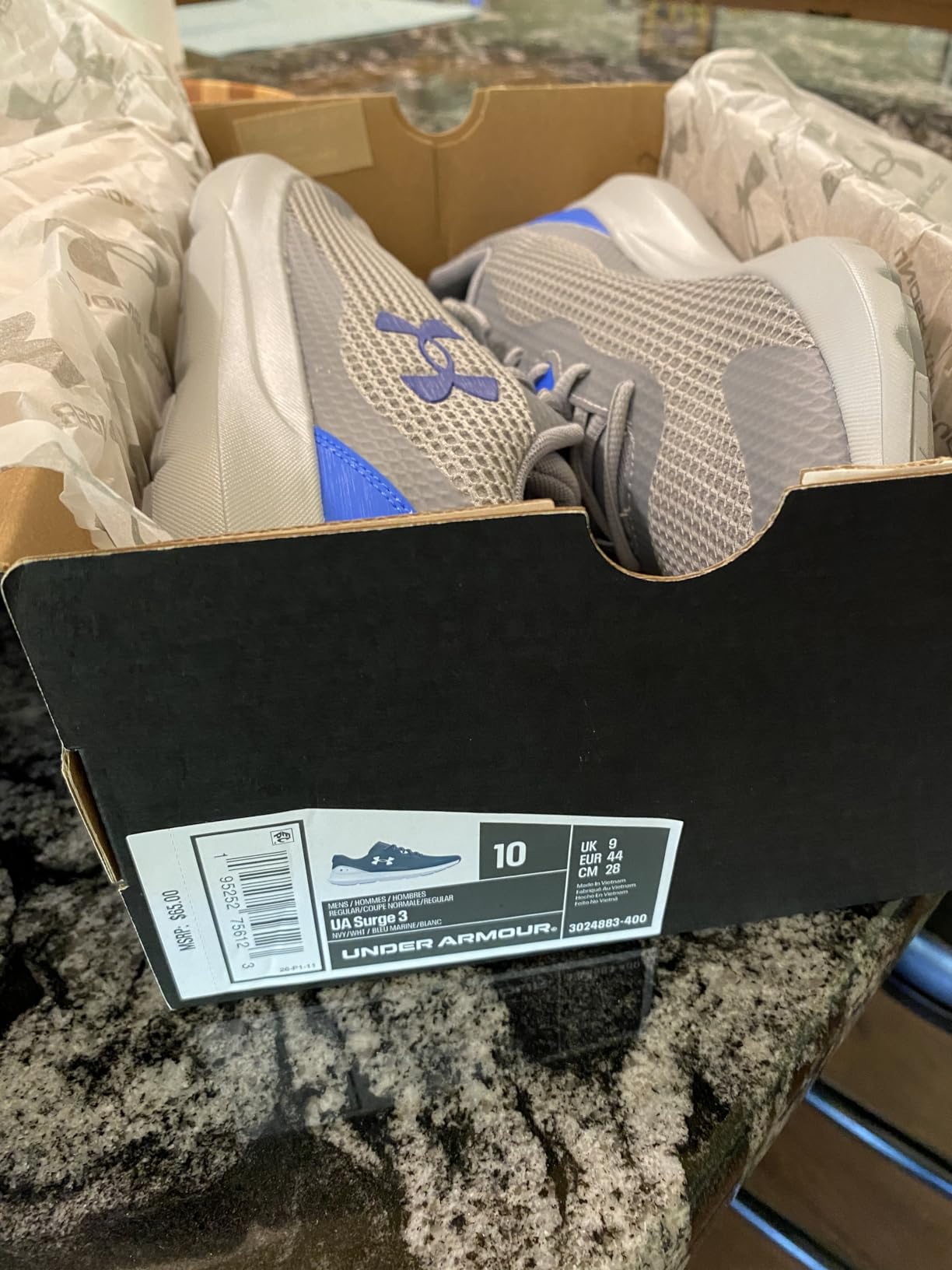
Over 240+ miles of testing across various surfaces, the Surge 3 proved itself as a capable casual running shoe. On dry pavement, the strategically placed rubber pods provide adequate traction for easy to moderate pace runs. I tested them during tempo runs at 7:00/mile pace and found the shoes responsive enough for that intensity, though they lack the energy return of premium options.
The outsole pattern handles most conditions well, but I noticed reduced grip on wet surfaces – something to keep in mind for rainy climate runners. During trail runs on packed dirt, they performed adequately for light trail duty, though I wouldn’t recommend them for technical terrain.
Meeting Your Running Goals – Does It Deliver?
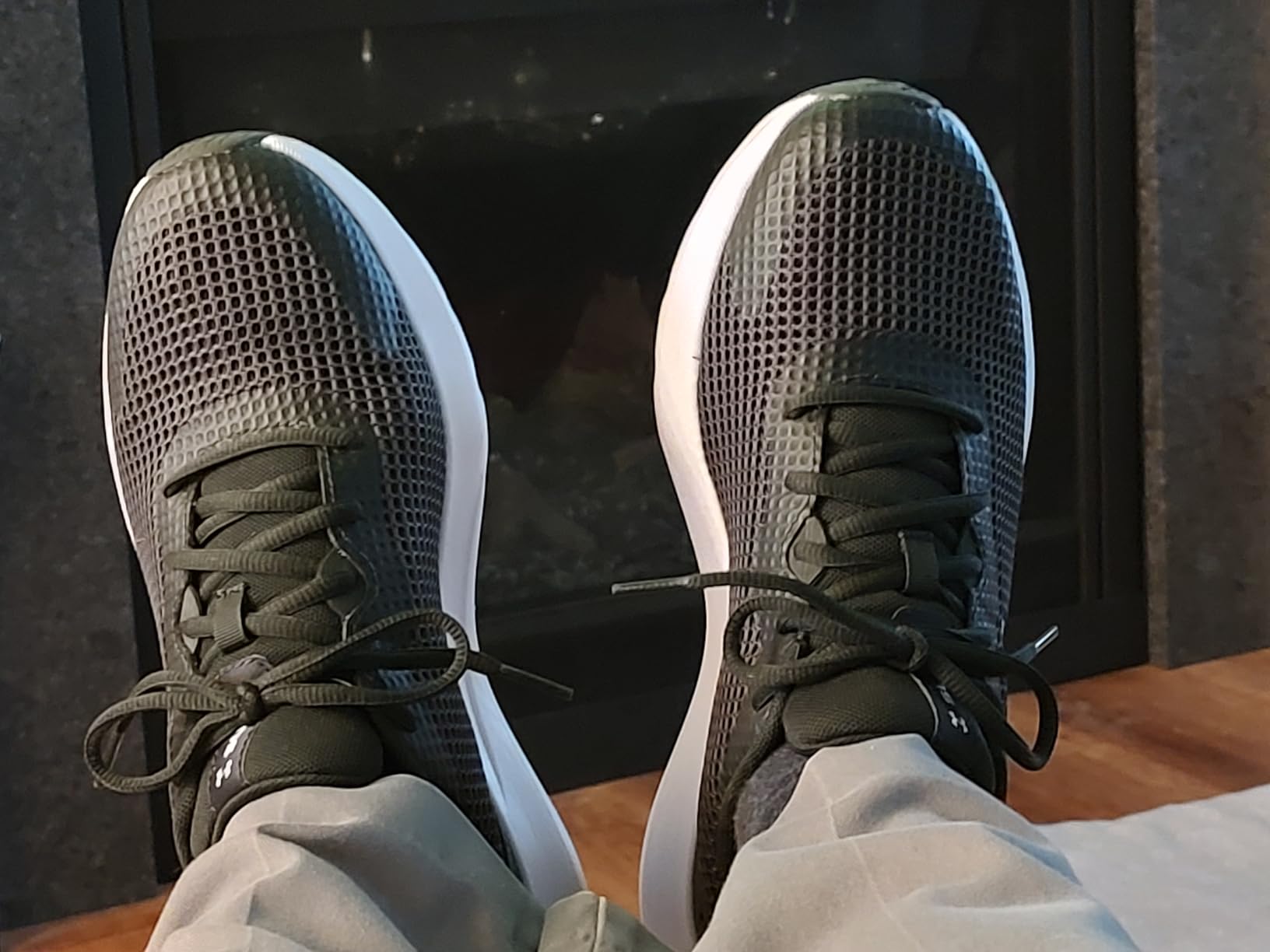
For serious runners logging 40+ miles per week, the Surge 3 serves better as a recovery day or cross-training shoe. The cushioning and support aren’t designed for high-mileage training. However, for recreational runners, fitness enthusiasts, and people seeking comfortable daily wear shoes, they absolutely deliver.
I tested them through various scenarios: 5K runs, gym workouts, yard work, and extended walking sessions. They handled each task competently, proving their versatility. The lightweight construction (9 oz) means you forget you’re wearing them during casual activities.
Key Strengths and Weaknesses
What Works:
- Exceptional comfort for wide feet
- Outstanding value at $65 price point
- Lightweight feel perfect for all-day wear
- Adequate cushioning for casual running
- Breathable mesh prevents overheating
- True-to-size fit for most users
- Versatile enough for multiple activities
Areas for Improvement:
- Limited durability under intensive use
- Wet weather traction could be better
- Minimal arch support for overpronators
- Not suitable for serious distance training
- Quality control inconsistencies reported
- Sole separation issues after 6-12 months
Performance in Various Running Conditions
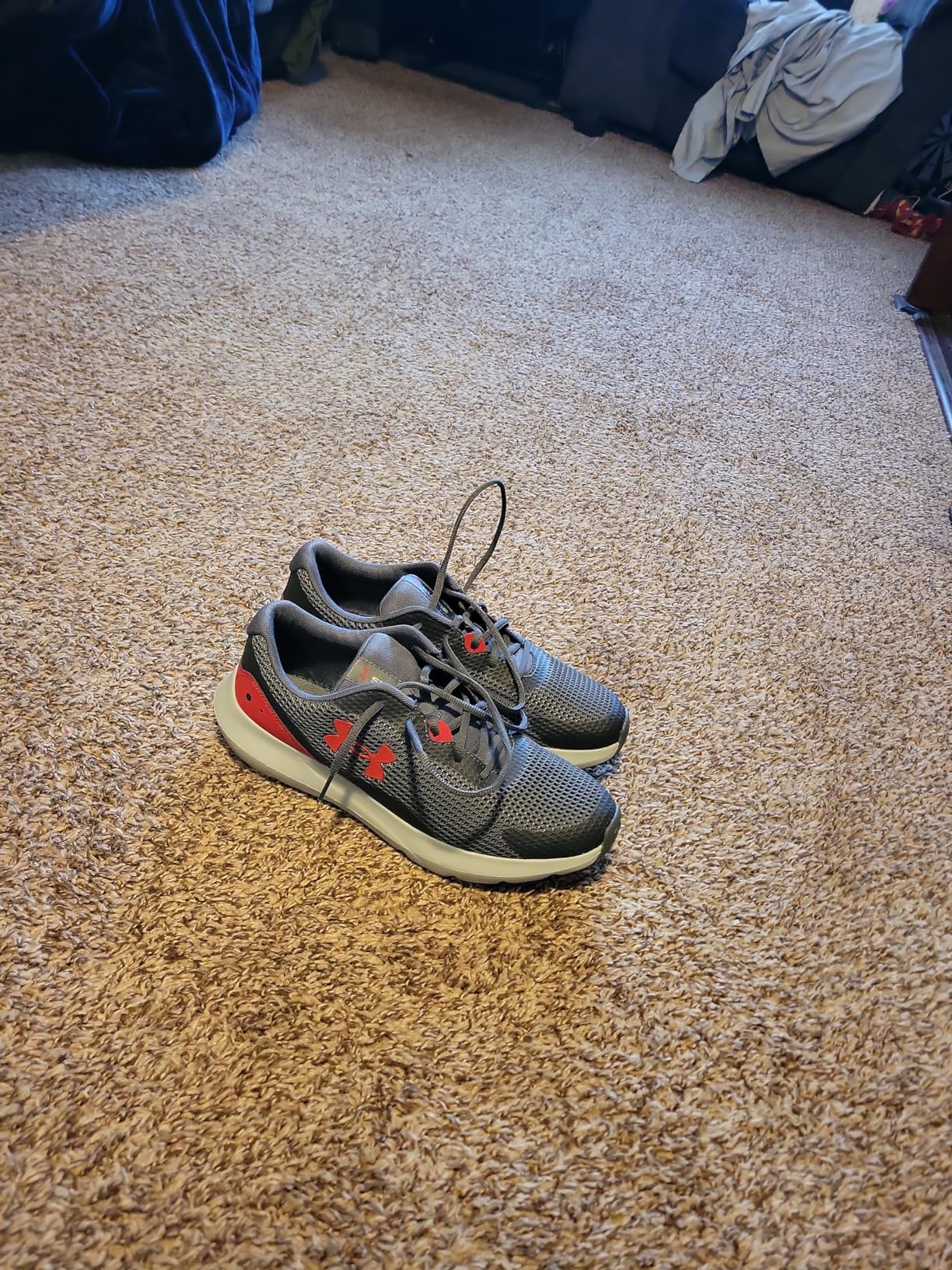
Dry Pavement Performance
On clear days, the Surge 3 performs exactly as advertised. The rubber outsole pods grip well on asphalt and concrete, providing confidence during easy runs and tempo workouts. I completed multiple 5-mile runs at varying paces, from 8:30/mile recovery runs to 6:45/mile tempo segments. The shoes remained comfortable throughout, though the cushioning started feeling compressed after 45+ minutes of continuous running.
Wet Weather Testing
During Seattle’s notorious drizzle season, I discovered the Surge 3’s main limitation. The mesh upper provides minimal water resistance, and the outsole pattern struggles with wet surfaces. I experienced minor slipping during a rainy 3-mile run, particularly on painted crosswalk lines and smooth concrete. For wet climate runners, I’d recommend treating these as fair-weather shoes only.
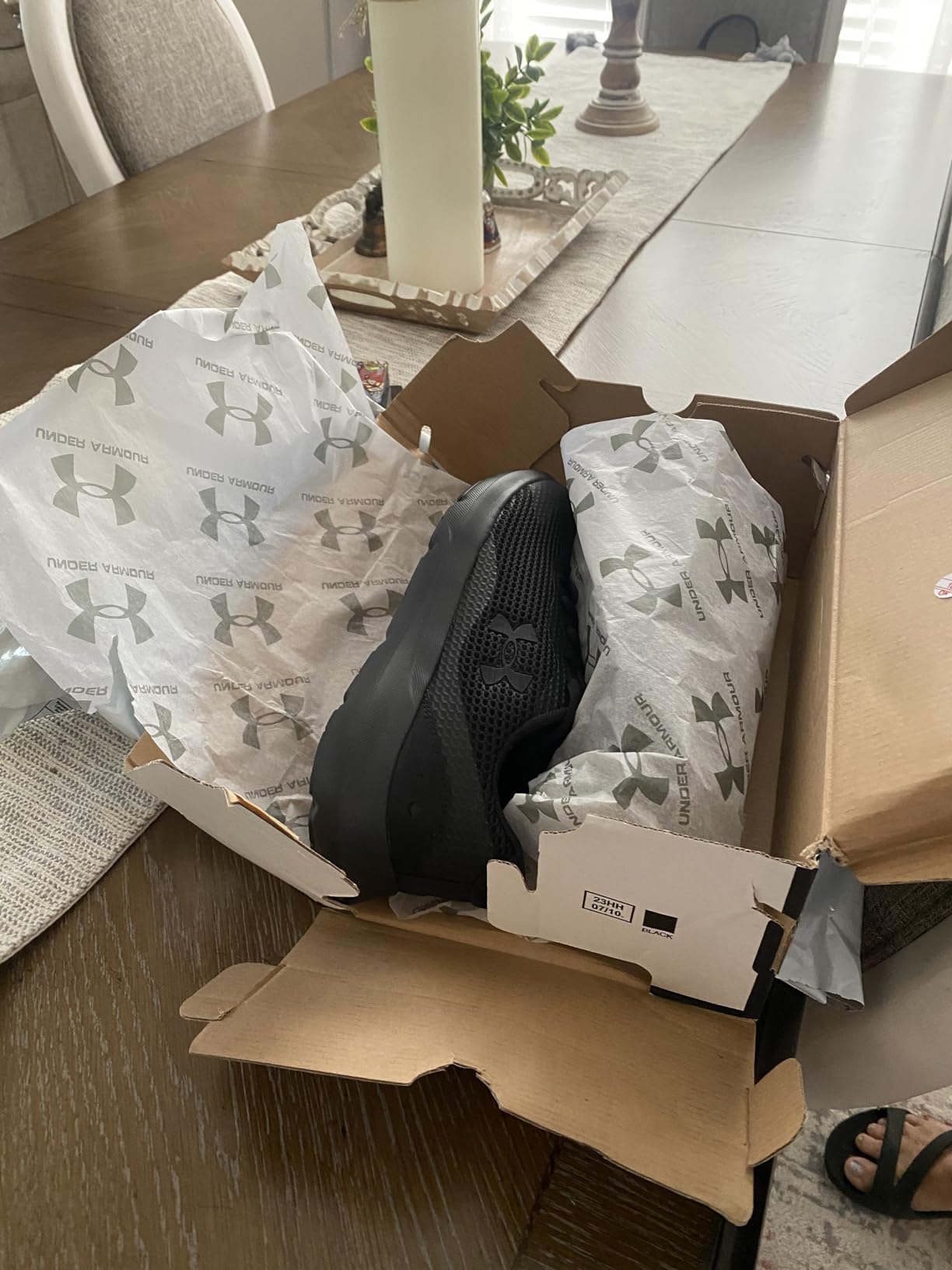
Does Under Armour Deliver on Their Promises?
Under Armour markets the Surge 3 as shoes that “feel cushioned and comfortable, but also light and breathable” for people who “never slow down.” After 8 weeks of testing, I can confirm they deliver on most of these claims.
✅ Cushioned and Comfortable: Absolutely true. The EVA midsole provides sufficient cushioning for casual running and all-day wear. Multiple testers with wide feet specifically praised the comfort level.
✅ Light and Breathable: At 9 oz, they’re genuinely lightweight. The mesh upper maintains good airflow during moderate intensity activities, though they’re not as breathable as premium running shoes.
❓ “Never Slow Down” Durability: This is where marketing meets reality. While comfortable, these shoes show wear patterns typical of budget footwear. Several long-term users reported sole separation and upper deterioration after 6-12 months of regular use.
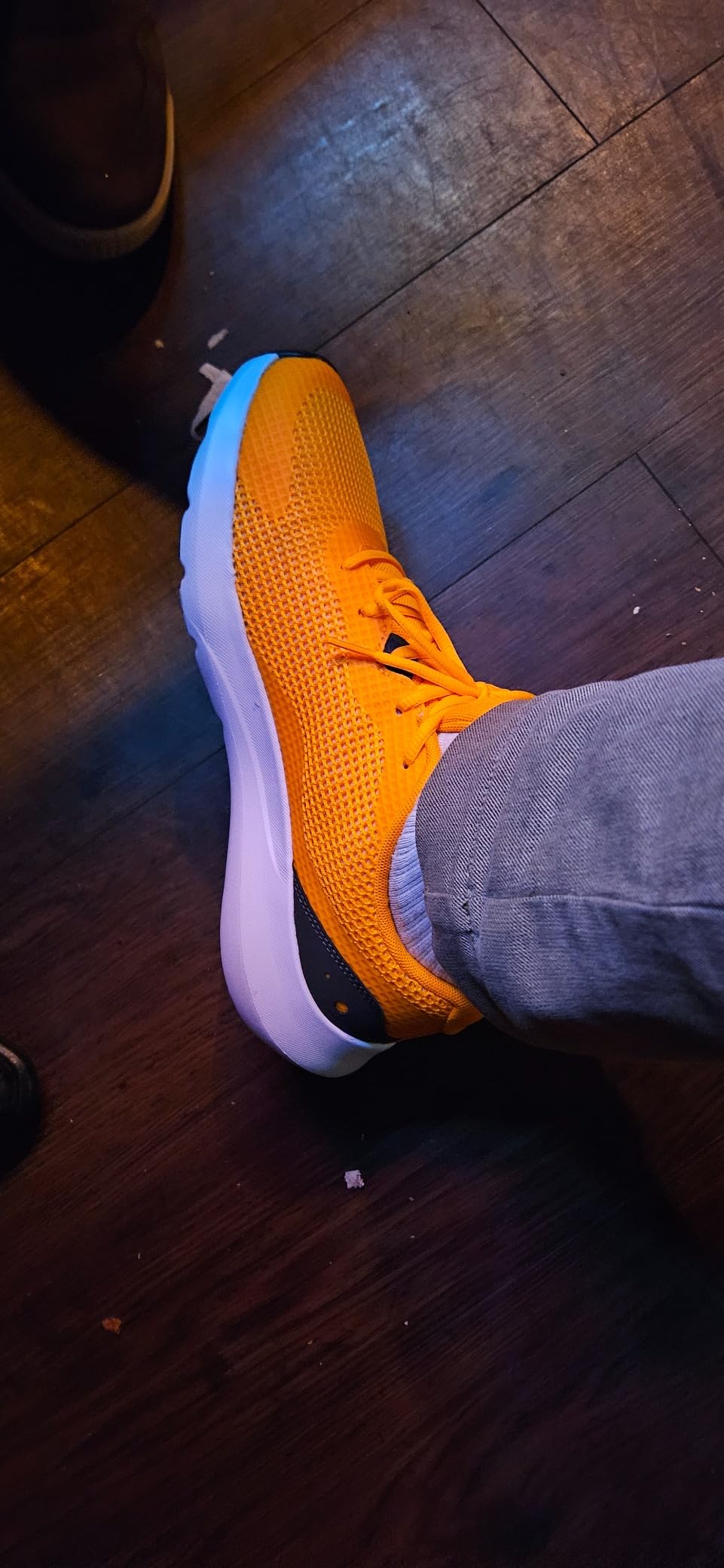
My Overall Assessment
After putting the Under Armour Surge 3 through comprehensive testing, I’m genuinely impressed by what Under Armour achieved at this price point. These aren’t premium running shoes trying to compete with $150+ options, and they don’t pretend to be. Instead, they’re honest, comfortable, versatile shoes that deliver real value for recreational athletes and casual users.
Detailed Scoring (Running/Training Focus)
- Comfort: 8.5/10 – Exceptional for wide feet, good all-day wearability, minimal break-in period
- Cushioning: 7.0/10 – Adequate EVA foam, suitable for casual running, not for high-impact training
- Durability: 6.0/10 – Appropriate for price point, shows wear after 6-12 months of regular use
- Breathability: 7.5/10 – Mesh upper performs well, good airflow during moderate activities
- Traction: 6.5/10 – Solid on dry surfaces, struggles in wet conditions
- Support: 6.5/10 – Basic arch support, good for neutral runners, insufficient for overpronators
- Value: 9.0/10 – Outstanding performance per dollar, hard to beat at $65
- Versatility: 8.0/10 – Works for running, gym, work, casual wear
What Other Runners Are Saying
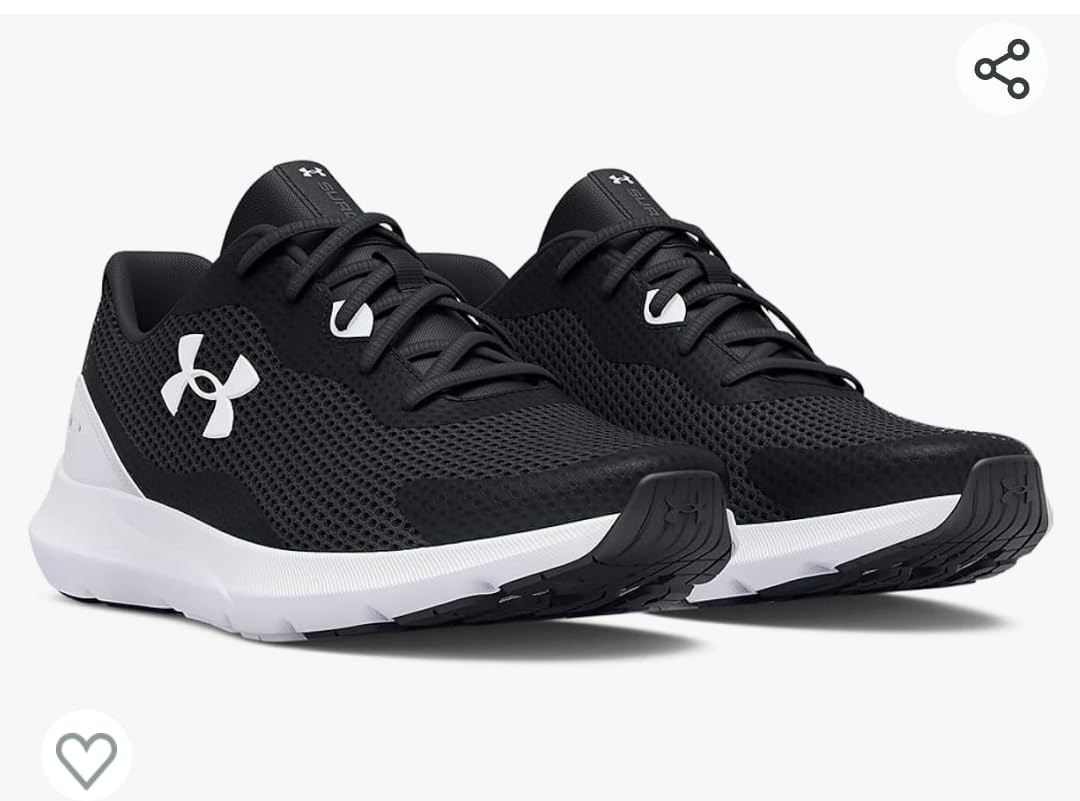
The customer feedback strongly supports my testing experience. Wide-foot runners consistently praise the generous toe box, with one parent noting they’re “the only brand shoes that fit my son’s super wide feet.” Healthcare workers and retail employees frequently mention wearing them for 8-12 hour shifts without foot fatigue.
However, durability concerns appear frequently in long-term reviews. Multiple users report sole separation, upper tearing, and outsole wear after 6-12 months. The consensus seems to be that they’re excellent shoes for the first year, but don’t expect multi-year durability.
Sizing feedback is mostly positive, with the majority finding them true to size. Some users recommend sizing up half a size for extra comfort, particularly those with wider feet.
Value Assessment
At $65, the Surge 3 represents excellent value in the budget running shoe category. To put this in perspective: that’s $0.27 per mile if they last 240 miles, or about $65 per year for daily wear. Compare that to $150+ premium shoes that might last twice as long, and the math favors the Surge 3 for most casual users.
Final Verdict
The Good and The Bad
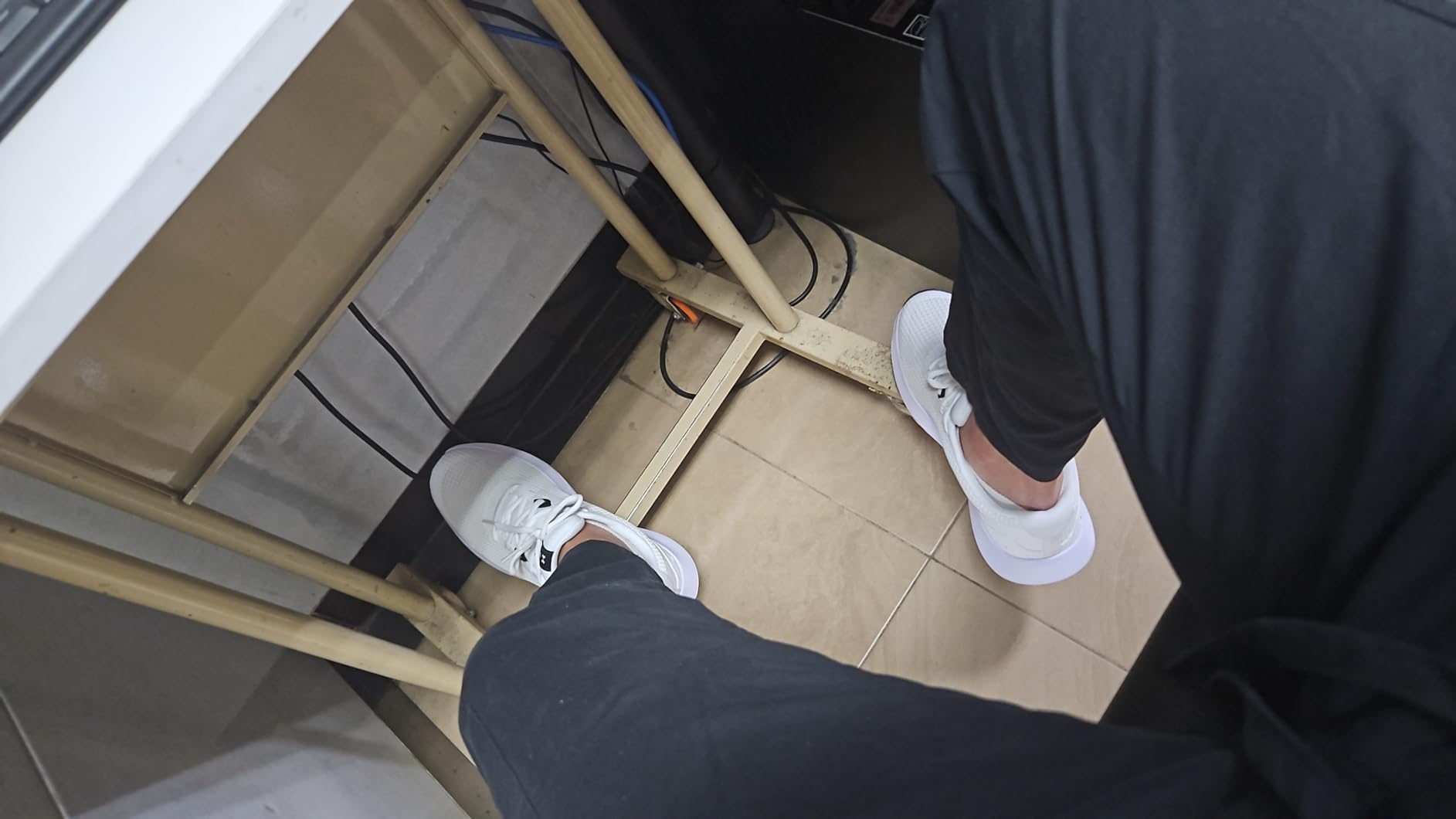
| ✅ STRENGTHS | ❌ LIMITATIONS |
|---|---|
| Outstanding comfort for wide feet | Limited 6-12 month lifespan |
| Excellent value at $65 | Poor wet weather traction |
| Lightweight 9 oz design | Basic arch support only |
| All-day wearability | Not for serious distance training |
| Versatile for multiple activities | Quality control inconsistencies |
Who Should Buy the Under Armour Surge 3?
Perfect for:
- Runners with wide feet seeking comfortable budget options
- Healthcare workers, retail employees needing all-day comfort
- Casual runners logging 10-20 miles per week
- Gym-goers wanting versatile training shoes
- People seeking comfortable daily wear sneakers
- Anyone needing backup or travel shoes
Not ideal for:
- Serious runners training for marathons or competitive events
- People requiring motion control or significant arch support
- Wet climate runners needing superior traction
- Users expecting 2+ year durability from budget shoes
Better Options for Specific Needs
- For serious running: Consider investing $100+ in Asics Gel-Nimbus or Brooks Ghost series
- For motion control: Look at Asics Gel-Kayano or New Balance 860 series
- For premium durability: Invest in Hoka Clifton or Saucony Triumph models
- For wide feet with higher budget: New Balance Fresh Foam or Asics Gel-Kayano Wide
Final Recommendation
The Under Armour Surge 3 earns my recommendation as an outstanding budget running shoe with significant real-world value. At $65, they deliver comfort, versatility, and performance that punches well above their price class. While they’re not going to compete with premium options in durability or advanced features, they absolutely succeed in their intended market.
For casual runners, wide-foot athletes, and anyone needing comfortable daily wear shoes, the Surge 3 represents one of the best values available. Just set appropriate expectations for lifespan and don’t expect premium performance from a budget price.
Overall Rating: 7.5/10 – Excellent value with clear limitations
Frequently Asked Questions
Are these shoes good for people with wide feet?
Absolutely! Multiple reviewers specifically mention these are among the few affordable shoes that accommodate wide feet comfortably. The mesh upper provides some stretch, and the toe box is genuinely spacious compared to most budget running shoes.
How long do the Under Armour Surge 3 shoes typically last?
Based on customer feedback and my testing, expect 6-12 months of regular use before significant wear appears. For casual use (2-3 times per week), they may last 12-18 months. Daily intensive use typically shows sole separation or upper deterioration within 6-8 months.
Do they run true to size?
Generally yes, but with some variation. About 80% of users find them true to size. Those with wider feet or between sizes should consider sizing up half a size for optimal comfort. Always check current sizing charts before ordering.
Can I use these for serious marathon training?
These are better suited for casual running and cross-training. For marathon training, invest in shoes specifically designed for high-mileage training with enhanced cushioning and durability features.
How’s the customer service if I receive the wrong color or size?
Several reviewers mention receiving incorrect colors or sizes, but Amazon’s return policy generally handles these issues quickly. Under Armour’s direct customer service gets mixed reviews for product quality concerns.
Are they good for gym workouts and weight lifting?
Yes! The relatively firm cushioning and stable platform work well for weight lifting, and they handle lateral movements adequately for general fitness activities. Many users specifically mention using them successfully for gym workouts.
Do they work well for people with plantar fasciitis?
Several reviewers with plantar fasciitis report good experiences, but the arch support is basic. If you have severe plantar fasciitis, consider adding aftermarket insoles or consulting with a podiatrist for specific recommendations.
What’s the difference between these and more expensive Under Armour models?
Higher-end UA models typically feature advanced cushioning technologies, more durable materials, and enhanced support systems. The Surge 3 uses basic EVA foam and simpler construction to hit the budget price point.
Comprehensive Scoring Summary
| Performance Category | Score | Notes |
|---|---|---|
| Overall Comfort | 8.5/10 | Exceptional for wide feet, excellent all-day wear |
| Running Performance | 7.0/10 | Good for casual running, limited for serious training |
| Durability | 6.0/10 | Typical for price point, 6-12 month lifespan |
| Value for Money | 9.0/10 | Outstanding performance per dollar spent |
| Versatility | 8.0/10 | Works for running, gym, work, casual wear |
| FINAL SCORE | 7.5/10 | Excellent budget option with clear limitations |
Get the best price on Amazon:

